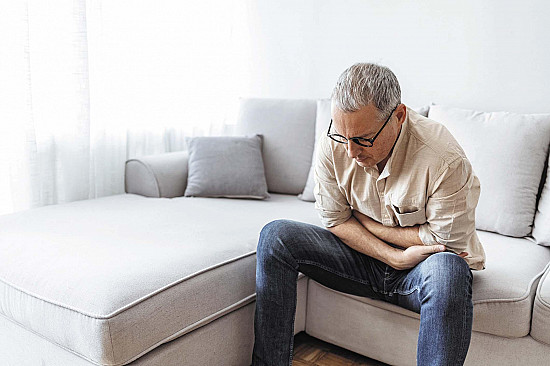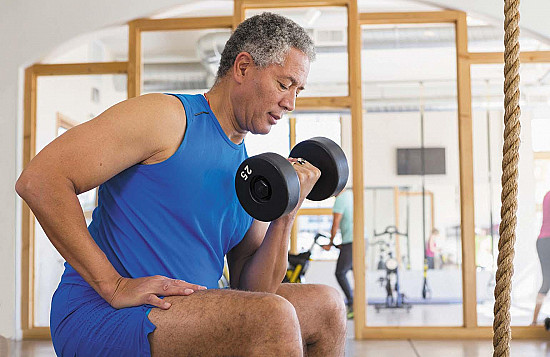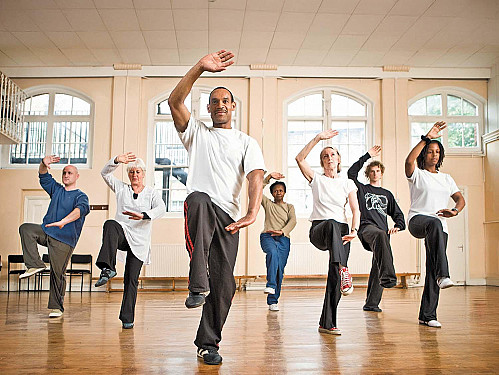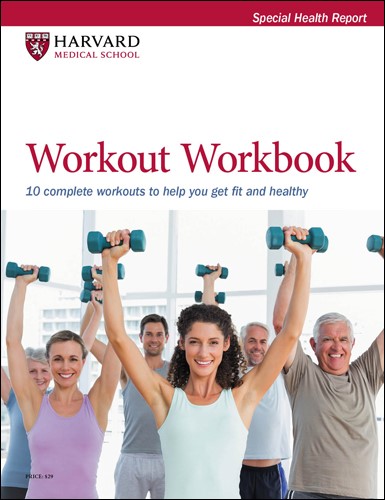The end of painful sitting
What can you do about pain and discomfort caused by sitting for long periods?
- Reviewed by Howard E. LeWine, MD, Chief Medical Editor, Harvard Health Publishing; Editorial Advisory Board Member, Harvard Health Publishing

Older adults typically sit for about 65% to 80% of their waking hours, according to some estimates. And all that inactivity is bad for your health. Research has shown that prolonged sitting can increase your risk for obesity, heart disease, diabetes, and cancer.
But another less serious, but still frustrating everyday problem caused by too much sitting is gluteal amnesia. Also known by its more colorful moniker, "dead butt syndrome," gluteal amnesia causes pain and discomfort in your buttocks.
It occurs when the gluteus medius — one of the three gluteal muscles that help stabilize the pelvis and maintain your body's proper alignment — becomes too weak. This can happen in different ways, but one is simply a lack of movement.
When it's rarely called upon to contract (like during long periods of sitting), the gluteus medius lengthens. At the same time, the hip flexors in the front of your thighs tighten because they are constantly contracted when you're in a flexed (seated) position.
This creates an imbalance between these opposing muscle groups, so they don't work together as effectively. The result can be a smaller range of motion that leads to pain or discomfort in your buttocks.
"And when the gluteus medius isn't functioning properly, muscles above, below, and around it may be called on to pick up the slack, potentially leading to hip, back, or knee pain," says Vijay Daryanani, a physical therapist with Harvard-affiliated Spaulding Rehabilitation.
Get up and get moving
Fortunately, with the right moves, you can correct this painful problem. The first step is to keep the gluteal muscles limber by standing and moving around more during the day. Here are some strategies that can help.
Drink water. Fill up a large water bottle and drink it throughout the day, so you'll have to get up to use the bathroom regularly. (Plus, it will help you stay hydrated.)
Set a reminder. Try not to sit for longer than 20 to 30 minutes at a time, says Daryanani. Set up alerts to remind you to get up and move. You can use a smartphone or other smart device, fitness tracker, or regular kitchen timer.
Take a chore break. Break up household chores like loading the dishwasher, doing laundry, and taking out the recycling into smaller segments, so you must move about regularly throughout the day.
Pace during phone calls. Stand or walk back and forth or in circles while you talk.
Strengthening weak muscles
The second step is to strengthen the weak gluteus. Here are three exercises adapted from Harvard Health Publishing's Special Health Report Body-Weight Exercise that can help. You can do them together on their own, or add them to your regular workouts.
Standing side leg lift. Stand up straight, feet together, with your weight evenly distributed on both feet. Relax your arms at your sides.
Movement: Lift your right foot to the side a few inches off the floor, shifting your weight to your left leg. Lift your arms out to your sides to help you balance. Hold for five to 30 seconds and return to the starting position. Repeat with your left foot. This completes one set. Repeat the sequence up to three times.
If holding the balance is difficult, keep the toes of your raised leg lightly touching the floor. For a challenge, hold the balance on each side for up to 60 seconds or with your eyes closed.
Skater. Stand up straight with your feet hip-width apart and your arms at your sides.
Movement: Jump to the right as far as possible, landing on your right leg. Bring your left foot across behind you and swing your arms to the right as you bend your right knee into a lunge. Repeat, leaping to the left and lunging on your left leg with your right one behind you.
Continue alternating directions for 30 seconds. To make the move easier, step to the side instead of jumping, make the lunge smaller, or don't lunge at all and instead tap your foot behind you. For a challenge, make bigger hops, or speed up the pace.
Clam. Lie on your right side, knees bent, and heels in line with your buttocks. Rest your head on your right arm and place your left hand on the floor in front of you.
Movement: Engage your gluteal muscles. Keeping your feet together, lift your left knee up toward the ceiling as high as comfortable. Hold for a second. Then slowly lower to the starting position to complete one rep. Keep a slow and steady pace — take three seconds to lift your knee and three seconds to lower it
Repeat the movement up to 10 times, then repeat on the other side. This completes one set. Perform two or three sets, resting in between. For more of a challenge, wrap an exercise band around both legs above the knees.
Image: © Panuwat Dangsungnoen/Getty Images
About the Author

Matthew Solan, Executive Editor, Harvard Men's Health Watch
About the Reviewer

Howard E. LeWine, MD, Chief Medical Editor, Harvard Health Publishing; Editorial Advisory Board Member, Harvard Health Publishing
Disclaimer:
As a service to our readers, Harvard Health Publishing provides access to our library of archived content. Please note the date of last review or update on all articles.
No content on this site, regardless of date, should ever be used as a substitute for direct medical advice from your doctor or other qualified clinician.
















